Salmon Satay
Published Jul 16, 2013•Updated Oct 29, 2025
This post may contain affiliate links. Please read our disclosure policy.
Sure you’ve had chicken satay, but have you ever had fish satay? The flavor of salmon pairs perfectly with satay spices to make Salmon Satay. Serve with peanut sauce on the side for an extra flavorful addition.
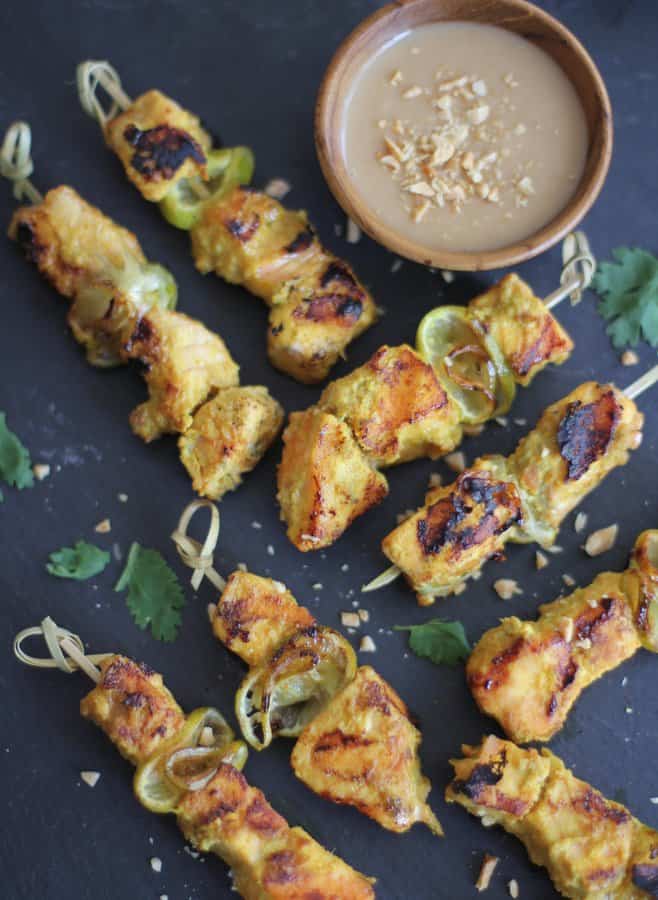
The longer I lived in Thailand the more I realized how much I had to learn. It’s the ironic plight of expats – the longer you live in a place, the more aware you become of how much there still is to know.
Fortunately, Thailand is a nation of people who are very patient and exceedingly kind. In my five years there, I learned so much, especially about food. The more I tasted, the more I realized how many foods and flavors I still didn’t know.
Such was my first experience with fish satay. There are many different fish that work well in satay. A light flaky fish is harder to thread onto skewers but allows the satay flavors to shine. However, salmon is a more sturdy fish, making it easier to cube and thread it onto these skewers.
And if you love satay as much as I do, be sure to bookmark my tofu satay bowls, easy chicken satay, or the classic authentic chicken satay.

What is Satay?
Satay, you may already know, is a Southeast Asian style of grilled protein, coated in a mixture of spices, served on a stick. Thai satay includes turmeric to give it a bright yellow hue. Chicken satay was a favorite of mine long before I had any clue I would live in Thailand. But it’s not just the smoky, well-seasoned skewers that are so good. It’s that peanut sauce on the side that no one can ever seem to get enough of. Peanut sauce may be the number one request I hear from tourists in restaurants around Thailand, but it’s not terribly common. The one way to be sure you’ll get it is to order satay.
This satay and peanut sauce combination goes so well with salmon that it’s great all on its own. I also love it over ramen noodles (I made a simplified version of Ginger Scallion Noodles, and piled the salmon right on top.)
Pin this now to save it for later
Pin It Now
More Easy Thai Recipes
Favorite Tools
Pin this now to save it for later
Pin It Now
Thai Salmon Satay
Equipment
- Bamboo Skewers
- Grill or Grill Pan
- Grater or Microplane
Ingredients
- 1 stalk Lemongrass, outer leaves, base and top stalk discarded
- 2 1-inch pieces Fresh Turmeric, peeled (or substitute 2 tsp. ground dried turmeric and 1 teaspoon warm water)
- 1 teaspoon fresh Grated Ginger
- 1 teaspoon minced Fresh Lime Zest
- 1/2 teaspoon Ground Goriander
- 1 teaspoon Light Brown Sugar
- 3 Tablespoons Light Coconut Milk
- 1 Tablespoon Soy Sauce
- 1 Tablespoon finely chopped Roasted Peanuts (use Tamari for gluten free)
- 1 1/2 pounds Fresh Salmon, cut into 1-inch cubes
- 1 Lime, thinly sliced
Instructions
- Using the finest slats of a grater (I use a Microplane), grate the lemongrass, turmeric, and ginger into a mixing bowl. Add the lime zest, cumin, brown sugar, coconut milk, soy sauce and peanuts and whisk to combine. Add the salmon cubes to the bowl, stirring to coat in marinade and refrigerate for 30 minutes.
- Prepare a grill (or a grill pan on the stove) over medium heat. Thread the salmon and lime slices evenly onto bamboo skewers. Grill until fish is opaque in the center, turning halfway through cooking, 5-8 minutes.
- Serve with peanut dipping sauce (below).
Nutrition
Nutrition information is automatically calculated, so should only be used as an approximation.
Pin this now to save it for later
Pin It Now
Thai Peanut Dipping Sauce
Equipment
- Saucepan
Ingredients
- 1 cup Light coconut milk (235 mL)
- ⅓ cup Natural Creamy Peanut Butter
- 2 tsp Light Brown Sugar
- 1 Tbsp Soy Sauce (use Tamari for gluten free)
- 1 tsp Sriracha (Asian chili sauce – use more or less, to taste)
Instructions
- Pour coconut milk into a small saucepan over medium heat. When the coconut milk begins to boil, reduce heat and whisk in remaining ingredients. Simmer for 5 minutes, until thickens slightly. Remove from heat. Serve immediately or refrigerate until ready to serve.
Nutrition information is automatically calculated, so should only be used as an approximation.

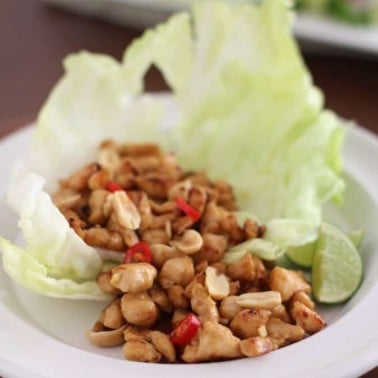
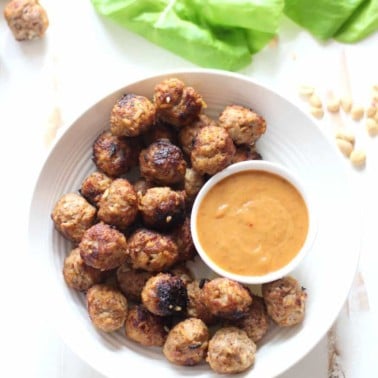
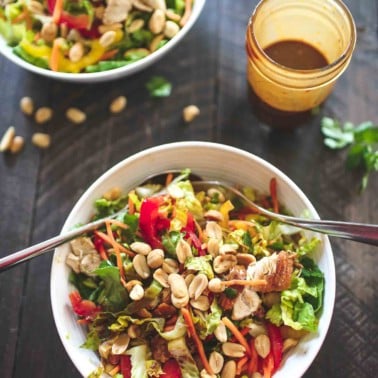
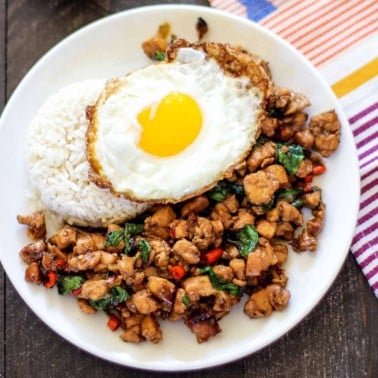


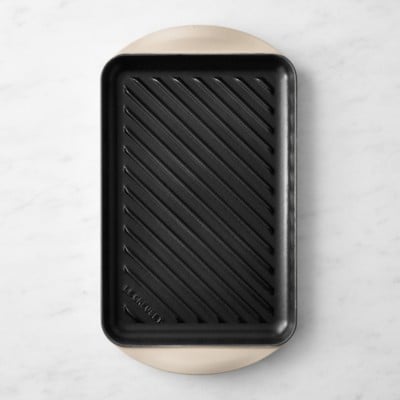
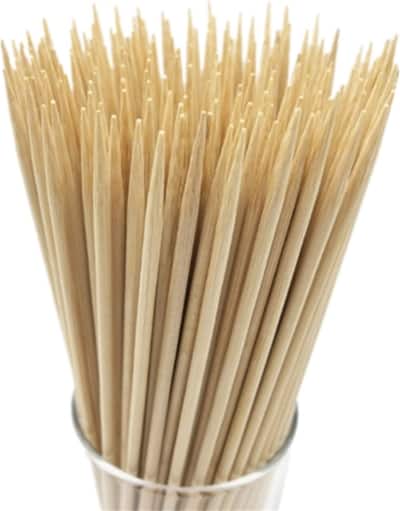
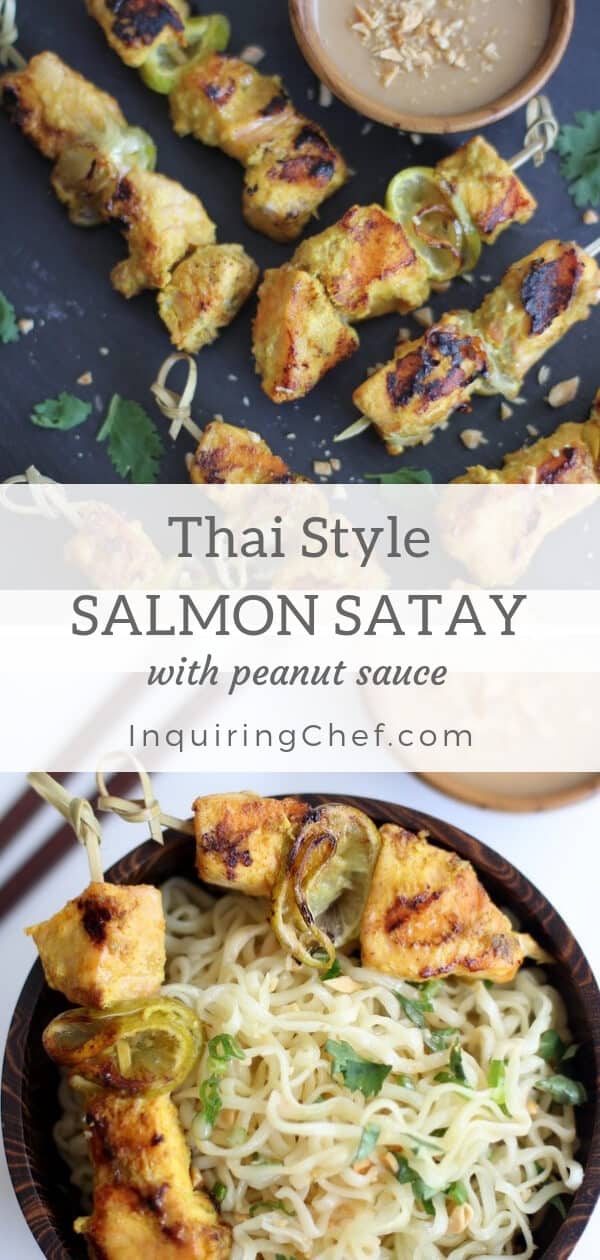
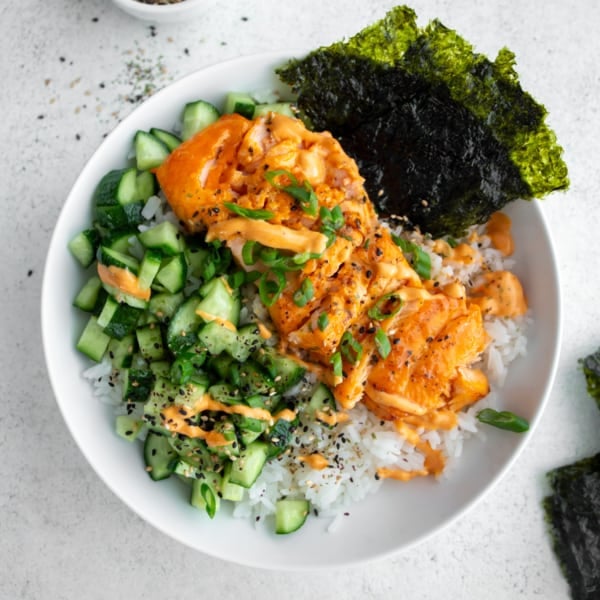
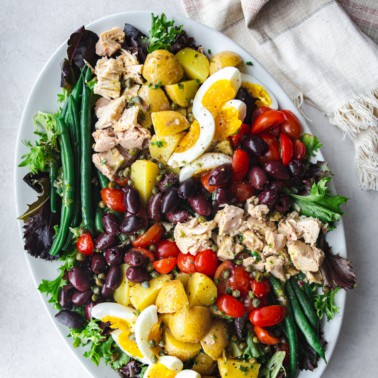










Salmon is my favorite type of animal protein! This looks so so good–pinned!